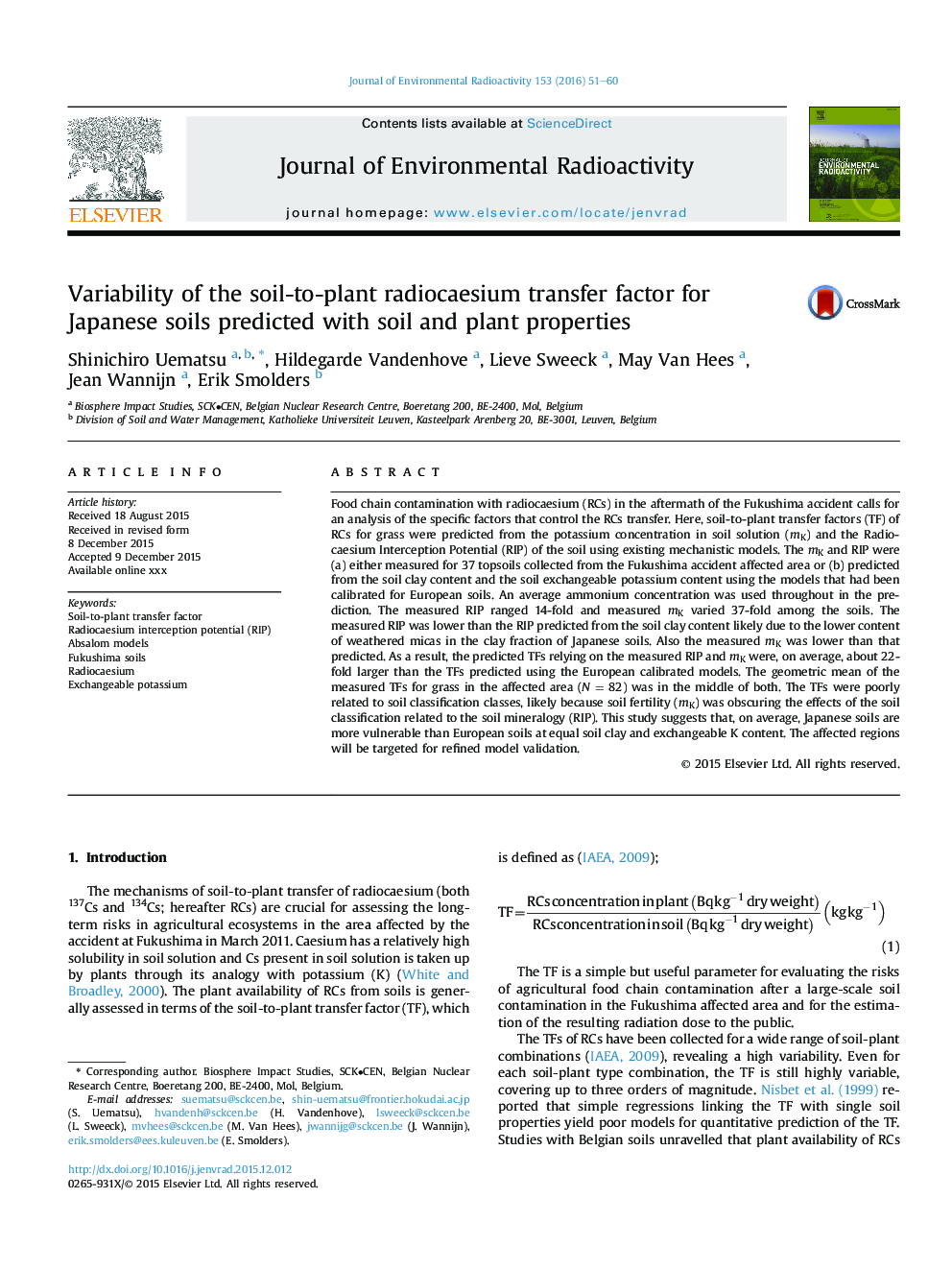| Article ID | Journal | Published Year | Pages | File Type |
|---|---|---|---|---|
| 8081989 | Journal of Environmental Radioactivity | 2016 | 10 Pages |
Abstract
Food chain contamination with radiocaesium (RCs) in the aftermath of the Fukushima accident calls for an analysis of the specific factors that control the RCs transfer. Here, soil-to-plant transfer factors (TF) of RCs for grass were predicted from the potassium concentration in soil solution (mK) and the Radiocaesium Interception Potential (RIP) of the soil using existing mechanistic models. The mK and RIP were (a) either measured for 37 topsoils collected from the Fukushima accident affected area or (b) predicted from the soil clay content and the soil exchangeable potassium content using the models that had been calibrated for European soils. An average ammonium concentration was used throughout in the prediction. The measured RIP ranged 14-fold and measured mK varied 37-fold among the soils. The measured RIP was lower than the RIP predicted from the soil clay content likely due to the lower content of weathered micas in the clay fraction of Japanese soils. Also the measured mK was lower than that predicted. As a result, the predicted TFs relying on the measured RIP and mK were, on average, about 22-fold larger than the TFs predicted using the European calibrated models. The geometric mean of the measured TFs for grass in the affected area (NÂ =Â 82) was in the middle of both. The TFs were poorly related to soil classification classes, likely because soil fertility (mK) was obscuring the effects of the soil classification related to the soil mineralogy (RIP). This study suggests that, on average, Japanese soils are more vulnerable than European soils at equal soil clay and exchangeable K content. The affected regions will be targeted for refined model validation.
Related Topics
Physical Sciences and Engineering
Energy
Nuclear Energy and Engineering
Authors
Shinichiro Uematsu, Hildegarde Vandenhove, Lieve Sweeck, May Van Hees, Jean Wannijn, Erik Smolders,
